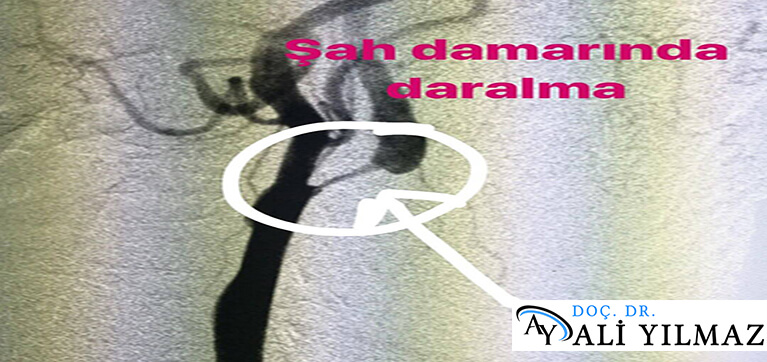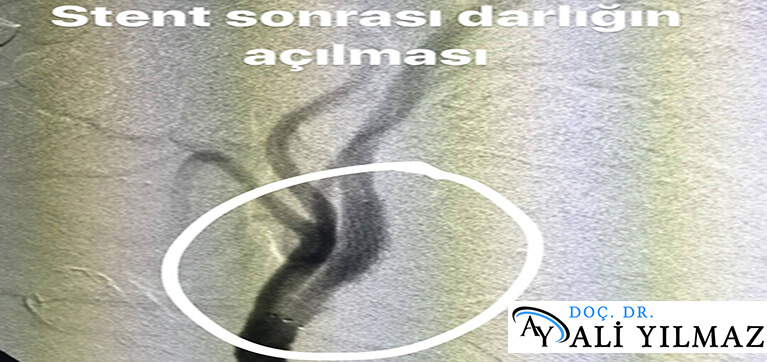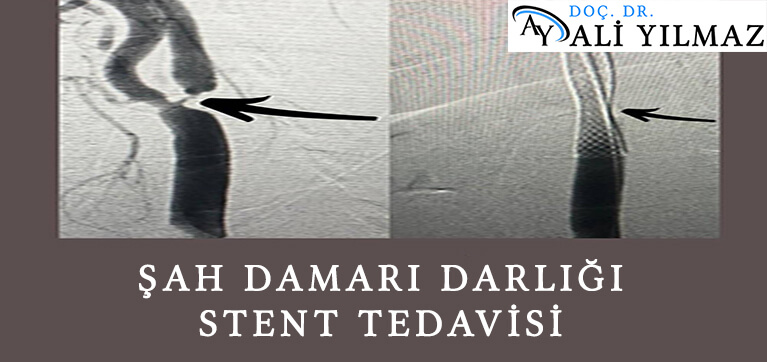
Stroke-Carotid Artery Stenosis
Stroke is a major cause of permanent disability and death. Most strokes are due to ischemic causes, and in approximately one third of these patients, the cause is carotid (Carotid artery) artery disease. The recurrence rate is high in strokes due to symptomatic carotid artery stenosis followed up with medication. Carotid artery stenosis The likelihood of stroke increases with increasing severity of stenosis, which is usually due to atherosclerotic causes. Therefore, stroke due to severe carotid artery stenosis or transient ischemic attack, and in patients with asymptomatic severe carotid artery stenosis, stenting is the primary treatment for stroke. is an effective and safe method of secondary prevention.
Where is the carotid artery and why is it important? Why does carotid narrowing occur and who has it?

It is the major artery to the brain and both carotid arteries supply the anterior 2/3 of the brain. If it is blocked, areas of the brain are left without blood, A condition called stroke - paralysis is observed. The internal structure of the vessel narrows, just like in a hot water pipe. Either the blood flow is completely cut off or The stenotic part breaks off and blocks the smaller vein or veins that it cannot pass through. Blood vessels are like a city network. The large vessels coming out of the heart become thinner at distant points in the brain and are known as capillaries, “as thin as a hair”.

Carotid artery narrowing is age-related and occurs in older people. Especially those with high blood pressure, high cholesterol and diabetes, Smokers, people who stop breathing during sleep (sleep apnea) are at risk. In addition, people with cardiovascular disease (stent or by-pass surgery) and Carotid artery stenosis is common in people with leg vein stenosis.
Endovasküler inme tedavisi nedir?
Endovascular stroke treatment is a minimally invasive, minimally invasive treatment in which a thin tube, a microcatheter, is inserted through the groin or arm to reach the brain vessel where the blockage is located. is a treatment method. A stent is placed in the accessed vessel. The clot causing the blockage is removed through the microcatheter and the vessel is opened. In case of narrowing, balloon treatment is applied again with the help of a microcatheter. Low risk compared to open surgery, incision and surgical wound in the groin area is a modern treatment method in which there is none but a small wound.
For information and treatment, you can contact Associate Professor Dr. Ali Yilmaz here.